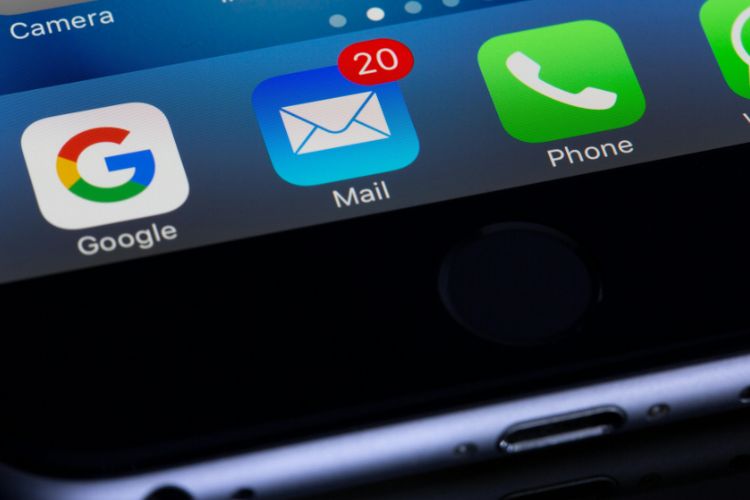Table Of Contents
- Key Takeaways
- Understanding SMS And Email Marketing
- 1. Email Marketing
- 2. SMS Marketing
- SMS And Email Marketing Benefits And Drawbacks
- Benefits Of Email Marketing
- Drawbacks Of Email Marketing
- Benefits Of SMS Marketing
- Drawbacks Of SMS Marketing
- SMS And Email Marketing Cost And ROI Analysis
- 1. Email Marketing
- 2. SMS Marketing
- Use Cases And Best Practices Of SMS Vs Email Marketing
- Best Practices
- Merging SMS Vs Email Marketing
- Case Studies And Examples Of SMS And Email Marketing
- 1. Retail Flash Sale Success
- 2. Healthcare No-Show Reduction
- 3. E-Commerce Cart Recovery
- 4. Hospitality Industry
- To Sum Up!
Why Emails Fall Short And How SMS Offers A Better Connection?
At the center of internet marketing for almost three decades has been email. For product notifications and newsletters, it has allowed companies to address millions at relatively modest cost.
But with the mailboxes filled up and consumers getting choosy about what they have time for, the boundaries of email marketing are becoming increasingly difficult to disregard.
Enter SMS marketing, a medium that sends concise, timely, and relevant messages straight to the cell phone of a customer.
With almost everyone now owning a smartphone, SMS has become an effective channel for brands that are interested in piercing the noise.
Why then are organizations reevaluating their reliance on email? And why is SMS such an appealing add-on—or even substitute—for today’s hyper-competitive marketing environment? Let us learn about the battle between sms vs email.
Key Takeaways
- Email is great, but spammed: Great for rich communication but also readily dismissed with spam, promotional folders, and lower open rates.
- SMS is urgent and immediate: SMS marketing enjoys more than 90% open rates, sending messages directly and in real-time, ideal for time-sensitive promotions.
- The numbers trend in SMS’s direction: SMS enjoys higher open, click-through, and engagement rates, while email offers scalability and cost.
- The way to go is to blend: Email offers depth, and SMS offers immediacy. Combined, they offer a multi-channel solution that equals engagement and conversion.
- Each holds huge ROI potential: Email is high-volume, low-cost; SMS is best for conversion-based campaigns.
- Applications vary: Email is best for newsletters, onboarding, and learning; SMS is best for flash sales, reminders, and alerts.
Case studies confirm it: Both channels are worked by brands and both show measurable uplifts in engagement and revenue.
Understanding SMS And Email Marketing
Before differentiating between sms vs email, let’s get to know both of them.
1. Email Marketing

Email marketing has been the “digital megaphone” for companies for years. It provides:
- In-depth, long-form content (newsletters, offers, whitepapers).
- Visual brand communication with images, GIFs, and video.
- Advanced segmentation and automated workflows for nurturing.
- Volume cost efficiency—it costs practically nothing to send thousands of messages.
But it is afflicted with oversaturation. The average recipient gets more than 120+ emails daily, a good majority of which are deleted unread or ignored. Spam filters and Gmail’s Promotions tab only help make the problem worse.
2. SMS Marketing
SMS, however, sends short text messages. Important points are:
- 160-character limit (short and action-oriented).
- High immediacy—90% of texts are read within 3 minutes.
- Mobile-first design: no templates, just plain text, making it universally readable.
- Opt-in requirement: customers must subscribe, creating a more engaged audience.
SMS feels personal because it enters the same inbox where friends and family communicate. This makes it highly effective but also higher-stakes—you can’t afford to abuse it.
SMS And Email Marketing Benefits And Drawbacks
Here are a few pros and cons of both SMS vs Email marketing;
Benefits Of Email Marketing
- Inexpensive, particularly for large mailing lists.
- Long-form communications facilitate the telling of stories.
- Best suited for branding and relationship building.
- Excellent automation and personalization capabilities.
Drawbacks Of Email Marketing
- Deteriorating open rates.
- Spam filters lessen visibility.
- Saturation: consumers get dozens of messages a day.
- Slower interaction.
Benefits Of SMS Marketing
- Above 90% open rates.
- Instant delivery and immediate response.
- Personal and unambiguous—direct to the phone.
- Ideal for last-minute deals.
Drawbacks Of SMS Marketing
- Expensive per message.
- Strict regulations (opt-in, GDPR compliance, TCPA).
- Intrusiveness risk through overuse.
- Limited content length and limited formatting.
Verdict: Email excels at depth and nurturing, but SMS on speed and immediacy.
SMS And Email Marketing Cost And ROI Analysis
When it comes to SMS vs Email marketing, here is a cost and ROI analysis;
1. Email Marketing
- Costs: Mailchimp, HubSpot, or ConvertKit have free or inexpensive plans. Costs at scale are still inexpensive (hundreds of fractions of a cent per email).
- ROI: Industry reports indicate $36 ROI per $1 spent.
2. SMS Marketing
- Costs: SMSes cost $0.01–$0.05 per SMS depending on volume and location. At 10,000 subscribers, campaigns become expensive per month.
- ROI: More expensive, but SMS typically generates $45–$60 ROI on $1 spent, particularly for high-conversion use cases such as flash sales or cart recovery.
Bottom Line: Email is optimal for scalability and cost, while SMS is optimal for ROI where time sensitivity and conversions are of highest value.
Use Cases And Best Practices Of SMS Vs Email Marketing
Here are a few use cases and the best practices of SMS and Email marketing;
Best Use Cases For Email
- Newsletters: Thought leadership, company updates.
- Visual promotions: Full offers with images and URLs.
- Onboarding sequences: Multi-step welcome user flows.
- Event invites: With calendars, attachments, and RSVP URLs.
Best Use Cases For SMS
- Appointment reminders: Doctors, spas, or service companies.
- Flash sales: “Expires in 3 hours—click now!”
- Order confirmations & shipping notices”.
- Urgent updates: Service disruptions, fraud alerts.
Best Practices
- For Email: Personalize subject lines, segment audiences, avoid spammy words.
- For SMS: Less than 160 characters, CTA should be concise but not wordy.
Merging SMS Vs Email Marketing
Instead of comparing them, the true potential lies in integration:
- Promotions: Send an extensive email with product details, and then a reminder SMS when the promotion is about to expire.
- Events: Send an invitation email with the complete agenda, and then send an event date reminder SMS.
- Customer Journey: Onboard and train through email, remind through SMS at milestones (“Congrats on your first month with us!”).
- Cart Recovery: Email first, followed by an SMS with a discount code to spur conversion.
Integration gives a multi-touchpoint experience, so customers are not missing out on key messages while also strengthening the relationship.
Case Studies And Examples Of SMS And Email Marketing
Here are a few case studies on SMS vs Email marketing that might be helpful for you;
1. Retail Flash Sale Success
A fashion boutique promoted a 48-hour flash sale. Email created buzz with images and promo codes. Day one, an SMS reminder increased activity by 300% with same-day conversions.
2. Healthcare No-Show Reduction
A healthcare practice paired monthly email newsletters with appointment reminders via SMS. Result: email engaged patients, with SMS decreasing no-shows by 40%.
3. E-Commerce Cart Recovery
An online retailer tested two methods: email-alone cart recovery and email + SMS. The email alone recovered 8% of carts. The two-channel method recovered 23%—about three times the conversions.
4. Hospitality Industry
A hotel chain sent comprehensive booking confirmations with terms and upsell incentives via email. They sent SMS reminders with instructions and check-in times on the day before arrival. The two-channel method cut call-center queries by 25%.
To Sum Up!
Email marketing remains strong but unfinished. Its weaknesses cannot be ignored. With inbox saturation and declining response rates, overreliance on email threatens to leave customers cold and dormant. SMS, on the other hand, cuts through the noise with urgency, immediacy, and closeness.
But the response isn’t email or SMS—it’s SMS vs Email. Each is a complement to the other’s strengths. Email offers detail and nurturing, but SMS offers action and urgency.
This combination creates stronger customer relationships, optimizes ROI, and has your message heard, read, and obeyed. For more on this, check out the accompanying resource from TextUs, a provider of SMS marketing software.
Read Also:















